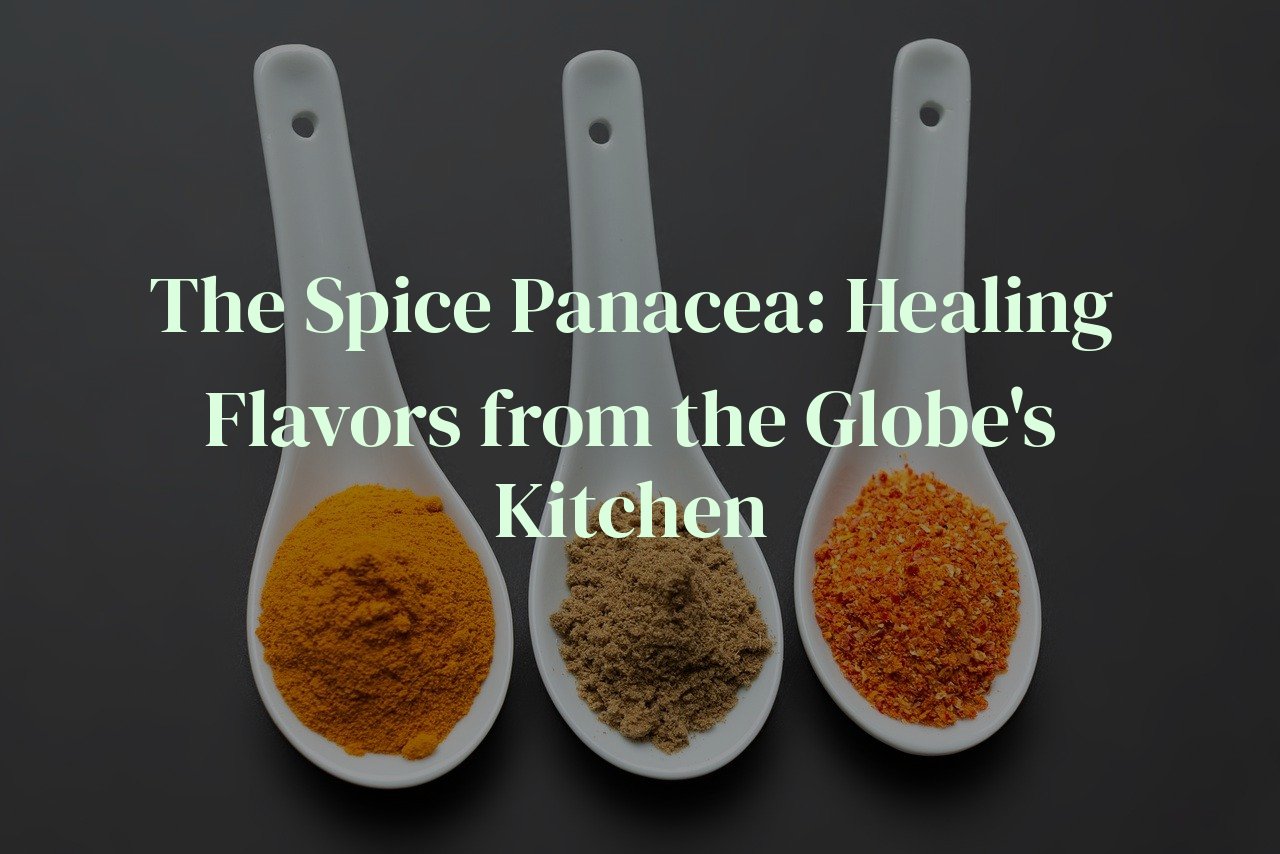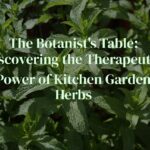
In the quest for well-being, the blend of taste and therapy often leads us to nature’s own medicine cabinet: spices. This blog ventures into an aromatic journey, exploring how the spices that enhance our meals can also play a pivotal role in managing and preventing chronic ailments. I invite you to embark on a flavorful sojourn where culinary delight meets medicinal wisdom.
As you navigate through the mingling fragrances and vibrant hues of various world spices, you’ll gather insights on their therapeutic benefits. Whether you’re seeking alternative approaches to health management or simply curious about the intersections of diet and wellness, this post will offer valuable information on incorporating spices into your dietary regimen to foster a healthier, more balanced life.
Table of Contents
Unraveling the Mystery of Spices in Traditional Medicine
The allure of spices transcends mere flavor enhancement; within their colorful granules lie tales of ancient wisdom and healing properties that have graced traditional medicines for millennia. The tapestry of spice usage is rich and varied, each culture weaving its own narrative of health and well-being through these aromatic treasures. Let’s embark on an olfactory journey to discover how the enigmatic world of spices has been deeply intertwined with medicinal practices, offering not just taste, but a path to longevity and vitality.
As an avid herbal enthusiast and globe-trotting spice collector, I’ve been mesmerized by the way civilizations have harnessed spices for their curative powers. The bazaars of Istanbul, for instance, hum with the knowledge that has traveled through generations, where every vendor seems to possess ancestral secrets tied to their fragrant wares. Cloves, once more precious than gold, were sought for their antiseptic and analgesic properties. As ancient as the Han dynasty, these tiny spikes have been applied to alleviate toothaches and freshen breath, a time-honored remedy that even today, science nods to in recognition.
Saffron, with its ethereal strands, paints a splash of yellow in paellas and risottos, yet its real magic lies in its ability to combat melancholy. Persian healers have long infused their potions with this ‘sunshine spice’ to chase away the shadows of depression. In my own kitchen, a pinch of saffron in a warm tea has often been my solace after challenging days, a ritual passed down from the annals of ancient apothecaries.
And how can we forget garlic, the pungent bulb that has marched through history with its protective cloak against maladies? Its powers were extolled in the Codex Ebers of ancient Egypt, recommended for a plethora of conditions. To this day, garlic remains a stalwart defender in our culinary arsenal, warding off colds and keeping our hearts robust with its natural compounds that keep the tales of old alive within its papery sheath.
Last, but certainly not least, cardamom, often called the ‘queen of spices’, breathes its warm, eucalypt scent into numerous dishes, while also offering a treasure trove of digestive benefits. Ayurvedic tradition reveres its detoxifying prowess, encouraging the inclusion of cardamom in daily diets to ensure the inner machinery runs smoothly.
Each spice, from the curries of India to the healing soups of China, carries within it the whispers of ancient healers. They serve as poignant reminders that, sometimes, the most potent medicine comes not from a lab, but from the very earth upon which we tread. As both a blogger and a fervent believer in nature’s pharmacy, I am continually humbled by the resilience and relevance of spices in our quest for health. Our forebears may not have had the scientific validations we seek today, but their intuitive grasp of spices’ therapeutic potential underlines a universal truth – nature speaks the language of healing, and spices are one of its most eloquent dialects.
Turmeric: The Golden Root of Anti-Inflammatory Well-being
The allure of turmeric, a spice that has bedecked my kitchen for years, transcends its vibrant color and earthy flavor—it’s a cornerstone of my culinary medicine cabinet. Traditional medicine has long revered turmeric for its anti-inflammatory and medicinal properties, a wisdom modern science has begun to echo. Curcumin, the active ingredient in turmeric, is a potent anti-inflammatory agent and antioxidant. But its efficacy is not just in ailments it fights; it’s also in the ease of integrating turmeric into daily life.
My mornings often start with a warm turmeric latte, the golden hue of the liquid mirroring the promise of a day with managed inflammation levels. The practice is calming, and the latitude in customizing this beverage allows me to incorporate black pepper, which increases the absorption of curcumin. This synergy is not serendipitous; it’s a purposeful blend to maximize the benefits. From reducing symptoms in chronic diseases like arthritis to promising research suggesting its role in managing heart disease and possibly even preventing cancer, turmeric’s potential is vast and deeply ingrained in my dietary routine.
Topical application also features in my repertoire. A mix of turmeric and honey applied to the skin not only provides an organic glow but serves as an antiseptic barrier, leveraging turmeric’s anti-bacterial properties. This golden paste has been my ally in combating acne and other skin inflammations. The sting of a fresh cut or a pesky kitchen burn finds a soothing balm in turmeric—an ancient remedy persisting in the contemporary first-aid kit.
My culinary ventures are often speckled with this golden spice as well. Whether it’s a sprinkle in a vegetable stir-fry, a teaspoon in a pot of lentils, or even a dash in a smoothie, the versatility of turmeric is unparalleled. It can transform the ordinary into the therapeutic, making it not only a player in the realm of flavor continuity but also a protagonist in my health narrative. It blends seamlessly with diverse cuisines, illustrating that turmeric’s application is as global as its origins.
In reflection, turmeric is not a mere ingredient; it’s a testament to the interconnection between our palettes and our well-being. It strengthens the pledge of culinary medicine—to harness the healing power of what we eat in a way that’s nurturing and holistic. Turmeric’s golden threads weave through the tapestry of my health consciousness, leaving patterns of restoration and vitality. Its tale of wellness is an ancient one, but in my life, as in many others, it’s an ongoing narrative of rediscovery and healing.
Cinnamon: Sweet Aroma with a Heart-Healthy Twist
The first time I sprinkled a teaspoon of cinnamon over my morning oatmeal, a delightful aroma wafted through the kitchen, hinting at the cozy warmth this spice brings to dishes. That small, everyday culinary choice marked the beginning of my fascination with this ancient spice’s heart-healthy properties. Studies suggest that cinnamon’s active component, cinnamaldehyde, may impact the biomechanics of our cardiac system, potentially lowering blood pressure and easing the workload on the heart.
Recently, I discovered an intriguing study linking cinnamon intake to improved cholesterol profiles. The bark that has flavored our lives for millennia harbors compounds that could lessen the bad LDL cholesterol, while subtly boosting the good HDL. This sweet-smelling marvel isn’t just for desserts; it elegantly underscores the philosophy of culinary medicine: using food to heal and not merely to eat.
But like any favored ingredient, moderation is key, and I learned this through a close friend who, in her enthusiasm, overindulged in cinnamon supplements, only to face unnecessary complications. It taught us to celebrate cinnamon within culinary realms, not as a solitary savior but as part of a harmonic health chorus.
And then there are the real-life applications that give weight to the research. I’ve stirred cinnamon into lentil stews and mixed it into warming teas. Each meal, enriched with this alluring spice, felt like an ode to heart health. Nigerians may add it to their Jollof rice, while Moroccans might incorporate it in their tagines – worldwide, cinnamon’s role in cooking transcends taste, also weaving its preventative prowess against chronic diseases into our dining rituals.
Culinary medicine finds its champion in cinnamon. Simple, yet profound, it is not so much an ingredient but a gesture, a nod to ancient wisdom that advocates balance. Embracing cinnamon in our kitchens is not just an act of seasoning, but one of healing, caring for our heart with each aromatic sprinkle.
Ginger: The Piquant Root That Soothes and Revitalizes
For endless generations, ginger has been a cornerstone spice in my family’s kitchen, an aromatic treasure known for its zesty kick that enlivens any dish. However, ginger’s prowess extends beyond culinary borders into the realm of health and healing. As a dietary therapy enthusiast, I savor the opportunity to dive deeply into the therapeutic jewels ginger embodies. This potent root, teeming with bioactive compounds such as gingerol, harbors a fleet of health benefits, and traditional medicine systems worldwide have revered it for millennia.
Through personal experimentation and study, I’ve learned that ginger’s benefits touch on digestive harmony, acting as a natural remedy for nausea, particularly in cases of morning sickness and chemotherapy-induced discomfort. The piquant brew I sip, a steaming ginger tea, seems to settle an upset stomach almost as if by magic, instilling a comforting warmth that passes from lips to abdomen.
But ginger’s brilliance doesn’t halt at digestive aid. Its anti-inflammatory properties echo through the corridors of holistic health communities. Chronic inflammation, a silent marauder linked to numerous non-communicable diseases, meets its match in this feisty root. My own achy joints have found solace through integrating ginger into my routine, observing an appreciable decrease in discomfort post-consumption. It’s no wonder athletes often incorporate ginger into their recovery regimen.
Moreover, emerging research hints at ginger’s potential in regulating blood sugar, promising for those contending with diabetes. Although I have no personal battles with blood sugar levels, I’m encouraged by the stories shared within the chatter of health forums and the promising initial scientific findings. Preemptively, I sprinkle ground ginger in my morning oatmeal, infusing my start of the day with both flavor and the silent guardianship against chronic conditions.
As if ginger’s resume wasn’t already brimming with accolades, its ability to bolster immune defenses marks it as a personal wintertime ally. Steeped in hot water with a slice of lemon, this concoction is my shield during flu season. The warmth of ginger’s embrace seems to permeate every cell, coaxing my immune system into vigilant readiness.
In the enchanting dance of spices that color our world’s palate, ginger twirls with vivacity, offering more than mere taste—providing healing, comfort, and a zest for life. Welcoming ginger into one’s dietary symphony is not just an act of nourishment, but a soulful embrace of nature’s own medicine, a legacy of wellbeing passed down through the spice-laden threads of history.
Pepper and Oregano: The Dynamic Duo Against Chronicity
Stumbling upon the formidable pairing of pepper and oregano in my culinary adventures, I unearthed more than just flavor enhancers for my palate. This dynamic duo carries within its essence an alchemy beneficial to health, particularly in the battle against chronic diseases. Black pepper, piquant and robust, is not only a staple in the kitchen but also a treasure trove of piperine, a compound that enhances nutrient absorption and wields anti-inflammatory properties.
Oregano, that aromatic herb that gives pizzas and pasta sauces their characteristic zest, also doubles as a power-packed botanical with antioxidants like thymol and carvacrol. These compounds are stars in the anti-inflammatory and antimicrobial universe, making oregano an ally in boosting immune function and protecting the body from oxidative stress, which can lead to chronic conditions, including heart disease and diabetes.
My personal crusade against seasonal allergies found solace in a simple concoction: a teaspoon of freshly ground pepper and oregano steeped in hot water. This soothing elixir, savored each morning, seemed to alleviate my symptoms and imbue a sense of wellness. Whether it’s sprinkled on an omelet or incorporated into a healing broth, these spices carry with them pockets of ancient wisdom and a bouquet of health benefits, truly a panacea from the global kitchen.
The marriage of pepper’s lively kick and oregano’s earthy depth not only arrests the senses but mounts a protective shield in our culinary arsenal. With every bite seasoned by this duo, I’m reminded that healing is a delicious journey, a blend of tradition and science, threaded through the dishes that grace our tables and the lives we lead.
Conclusion
As we’ve journeyed through the scented pathways of culinary medicine, we’ve discovered how the simple act of seasoning not only embellishes our plates but also fortifies our health. Embracing the power of world spices in our daily meals serves as a testament to the ancient wisdom of food as medicine. Let us continue to indulge in the therapeutic artistry of spices, making every dish a step towards enduring vitality.



